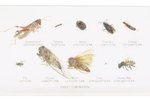Flea and tick collars are just one option a pet owner has to control pesky parasites. Like other flea and tick treatments, collars use chemicals to kill specific parasites at different life stages. Collars vary widely in their effectiveness because they use different chemicals and mechanisms to do their job.
Traditional Flea and Tick Collars
A flea and tick collar works one of two ways:
- Releases a toxic gas to the pet's head and neck area to locally kill fleas and ticks
- Emits a chemical that's absorbed into the pet's skin on a wider area.
Historically, flea and tick collars had a poor reputation among vets who routinely saw cats and dogs suffering from flea infestation on the lower portions of their bodies. As new products became available that offered more comprehensive parasite protection, such as spot-on topicals, veterinarians promoted their use over more traditional methods, such as collars, sprays and powders.
Advanced Collars
Some vets are giving flea collars a second chance with a newer product on the market, produced by Bayer. The Seresto collar combines routine chemicals used for flea and tick prevention, imidacloprid and flumethrin, into a special collar that's made to continuously replace chemicals over an eight-month period. The collar is made of a special material that gradually releases the chemicals to spread over the cat or dog's skin surface. The collar is water and sunlight resistant, maintaining its effectiveness even if a dog has a monthly bath. If a dog spends more time in the water, the collar's effective time period decreases to five months.
Different Collars, Different Results
Not all collars are created equally and their effectiveness is driven by correct usage and the chemicals they contain. Common ingredients in flea collars include:
- Organophosphate and carbamate-based chemicals, which kill adult fleas
- Permethrin-based chemicals to kill adult fleas
- Pyrethrin to kill adult fleas
- Piperonyl butoxide to kill and repel some insects
- Amitraz to kill ticks
Warnings
Cats and kittens should never use parasite control products using amitraz or permethrin, which are toxic to cats.
One Size Does Not Fit All
A flea and tick collar for a dog can be deadly for a cat. Ingredients such as amitraz and permethrin are toxic to cats. As well, the Natural Resources Defense Council reports that parasite control products containing organophosphates are potentially dangerous to pets and people. The Council found possible risk to pets, children and adults from exposure to some organophosphates, including chemicals found in some flea collars such as:
- Naled
- Dichlorvos
- Chlorpyrifos
Proper Protection
Your vet can help guide your flea and tick prevention choices. There are a wide variety of options to choose from, including spot-on topicals, oral tablets and shots. If you choose to use a flea collar, use it as directed to ensure it's safe use for your cat or dog.





